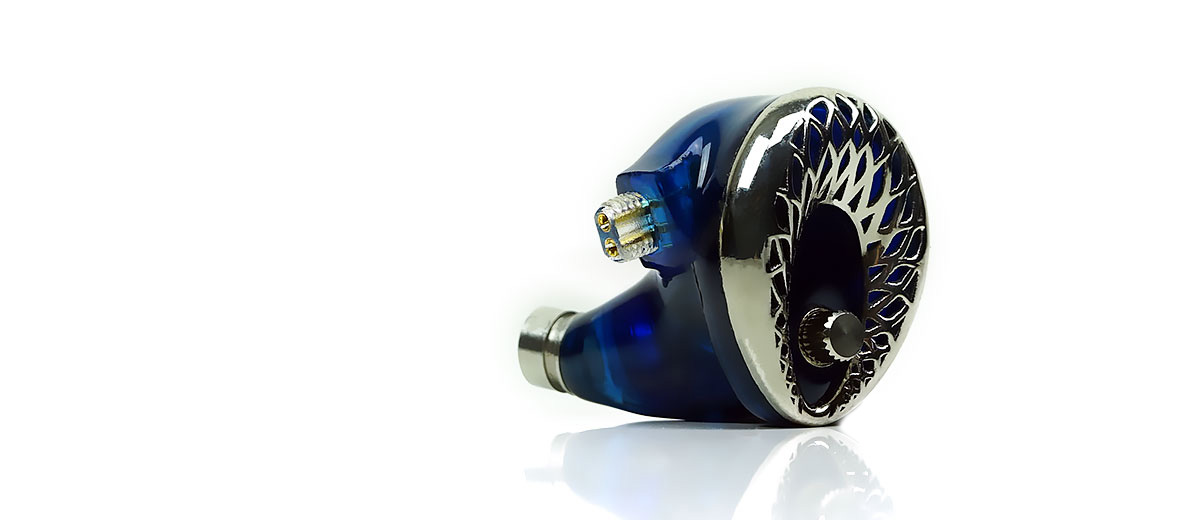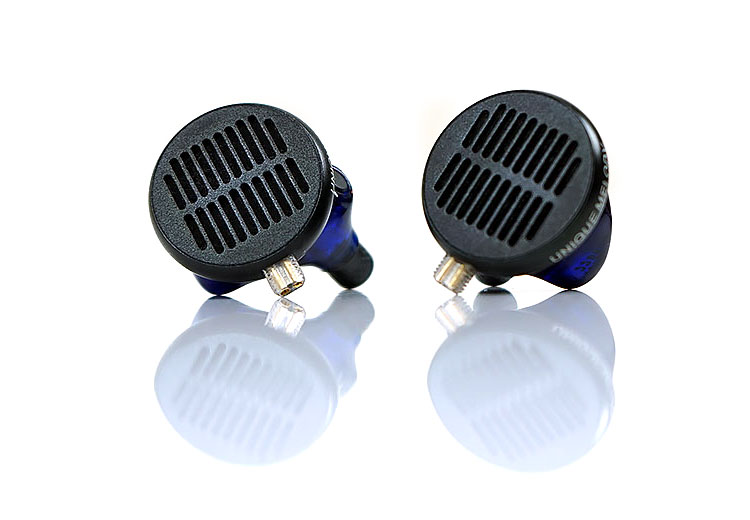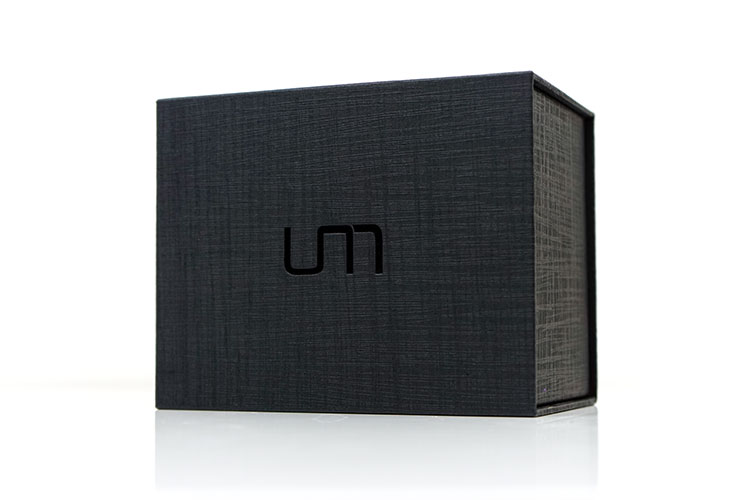Sound Impressions
Summary
If you are expecting reference then look the other way because the 3DD-Ti is an unabashedly fun sounding and very musical experience. This is a decidedly V-shaped presentation with a solid emphasis on rumbling sub-bass presence and power combined with a heightened upper midrange/lower treble energy and sparkle.
Mids take second place in terms of instrumental positioning and thickness. The timbre is on the cooler leaner side though so recessed, yes, but veiled a definite no. There is plenty of clarity in the 3DD-Ti performance so I would never describe this as dark or boomy congested signature.
dB-GO Effect
As with the Mason V3, the dB-Go module is more on the subtle side than aggressive in terms of bass adjustment. You will get around 4dB plus or minus with a focus on the sub-to mid bass frequency. With the dB-Go twisted on you will hear a little more warmth and body which will suit those who find the stock setting timbre to be too clean and lean.
I would advise turning the dB-Go down with the foam tips as it tends to darken the sound too much for my liking. I do enjoy the dB-Go effect with the silicone tips which balance out the enhanced low-end body with cleaner mids and treble.
Staging
The 3DD-Ti has a fairly typical good quality V-Shaped soundstage. You get plenty of depth and decent height with a slightly recessed instrumental positioning which at times lacks a bit of focus and presence. The listener is going to find themselves quite a number of rows back from the music using the 3DD-Ti which paints a fairly grand signature as opposed to intimate and in the thick of it.
Vocal presence though varies a little for me. There is a 1-2k elevation and then a larger focused upper mids peak around 4k. It hardens the vocal timbre on soprano high-pitched vocals but at the same time prevents a lot of vocals sounding veiled and muted. That is something that bugs me a little about the IE800 and a presentation that the 3DD-Ti avoids in its staging.
Bass
The 3DD-Ti low-end is sort of L-shaped with a heightened sub-bass peak right down there at 30mHz and a slow but relatively linear and well-controlled drop into the lower-mids around 400Hz. This is more rumble than punch, more power than warmth though you can adjust that slightly with the db-go module.
The texture and detail are excellent with a decent level of pace for such a large driver. I do not find this to be a boomy overblown sound and much like the Martian Um have resisted allowing the 3DD-Ti low-end from complete dominating everything else.
Mids
The resulting low-end tuning will give you plenty of depth but also a slightly cooler instrumental timbre for lower pitched instruments that reach deep such as double-bass and kick drums. That dip at 400Hz up to around 800Hz robs instruments of a little warmth leaving them a little more on the lean side. They still have some decent fundamental presence so it is not that they lack any impact but rather more a level of meatiness and presence that I tend to prefer for my guitar sound.
UM has wisely inserted a little uplift from 1-2k to keep vocal presence clear and with decent focus. Vocal timbre will still sound relatively recessed and leaner compared to the likes of the ME.1 and Martian which have a bit more warmth and body but they most certainly do not sound veiled. It is one thing to have a dipped midrange, quite another to suck it of air and energy and the 3DD-Ti successfully avoids that.
Treble
Both the upper mids and lower treble of the 3DD-Ti are decidedly elevated, more so the upper midrange by a good 10db over the mids and possibly up to 15dB on the lower mids. It will sound exciting and lively but also a little hard and edgy in tone depending on the recordings you throw at it and your source.
The odd time female vocals exude a few sharp partial overtones that can sound “zingier” than overtly sibilant. I can tone that down with the foam tips but at the cost of a much darker signature. You will hear it more with the silicone tips though a warm source such as the Cayin N8 tube output will reign it in substantially.
Does it balance out the low-end? Yes, it does that reasonably well. You just have to watch that 3-4k and 6-7k a little in your pairings. Beyond that, there is a slight tail-off in energy from 8-10k onwards but still enough headroom for a relatively airy signature. Again, the silicone tips will be the choice if you like to get the most out of the 3DD-Ti’s upper treble presence.
Matchability
Efficiency & Synergy
The 3DD-Ti is rated at 20.5Ω and just 98dB sensitivity levels. The power requirements are fine for just about any source at just over 20Ω. However, the sensitivity levels are pretty low so you will find that moderate sources such as smartphones will not have enough gain to get the 3DD-Ti to decent listening levels.
A moderately powered DAP such as the Cayin N3 or even the excellent balanced output of the iBasso Dx120 will provide you with more volume control and headroom. In some ways, I am not terribly surprised as dynamic drivers are traditionally harder to drive than balanced armatures and having 3 of them in a single IEM will make doubly sure of that.
I have to pay special mention to the Cayin N8/3DD-Ti pairing using the 3.5mm tube output. The dynamic drivers of the 3DD-Ti will scale very nicely with the N8 with some excellent low-end definition and power. The tubes also inject a little more welcome warmth into the instrumental timbre as well as smoothen out the treble. DAPs with a brighter treble response may sound a little harsher with the 3DD-Ti.
Noise
What you can also be certain of is the excellent performance of the 3DD-Ti on higher noise floors. It will pair nicely with DAPs such as the FiiO X3iii and X5iii as well as portable tube amps such as the ALO Audio V5 and Oriolus BA300s. You will not hear any hiss from any of these sources or amps.
Select Comparisons
For the comparisons, we decided to focus on some of the other UM offerings as they have a lot of hybrid systems and similarly priced gear that we have reviewed and know well.
Unique Melody Merlin
$1029
Technical
There are two versions of the Merlin since they first launched in 2011. This is the V1 in a custom format which was my first custom back in 2011, and the monitor that made me believe IEMs were competitive compared to headphones. The price back then was a shade lower than now at around $900.
This is a hybrid 5-driver monitor with a single dynamic driver for the lows and dual TWFKs on the mids and highs. Being a custom the fit is very accurate with a slightly relaxed fitting which is how UM seem to finish their custom designs.
Ironically, the bass vent on the Merlin means that it does not isolate quite as well as BA monitors. Actually, the 3DD-Ti is on par and if not better with the forms for isolation with its deeper inserting tip design.
The cable on the Merlin back then was a throwaway Plastics One OFC 4-wire black twisted 3.5mm build. It was nothing special and actually dulled the presentation substantially. UM cables have come a long way since then and I would recommend something SPC or silver instead to really get the most out of this excellent custom monitor.
Performance
The V1 specs of the Merlin are different from the V2. The V1 is rated at just 12Ω and 108dB compared to the V2 which shot up to 43Ω so it is a little easier to drive than the newer version. Compared to the 3DD-Ti is it the easier of the two to drive by some distance. Adequate listening levels on the DAPs tested was much lower on the Merlin compared to the 3DD-Ti.
For example, in low gain on the Sony 1Z the Merlin was plenty happy on about level 45 in balanced low gain. By contrast, the 3DD-Ti needed to be pushed up to around 65 max 70 to reach similar listening levels in balanced low gain mode.
Of course, with higher levels of sensitivity, the Merlin is more sensitive to higher noise floors than the 3DD-Ti. In our test amps, the ALO Audio V5 and Oriolus BA300S, the Merlin could pick up a low level of noise whereas the 3DD-Ti was dead quiet. The Merlin is almost dead silent with the tube output of the Cayin N8 but much less sensitive than the Andromeda is on the N8.
Preferences
The Merlin V1 is a more pronounced u-shaped presentation than either the ME.1 or the Martian, however, the bass response is much more relaxed and softer in nature than the more aggressive 3DD-Ti low-end. The Merlin does not have the same sub-bass power and the driver does sound a little slower with a longer decay by comparison.
That being said the Merlin has a warmer mid-bass and it is not quite as dipped in the lower mids so instrumental notes have a little more body and a slightly more natural sounding timbre. The 3DDTi instrumental timbre is much cooler and leaner by comparison. I have a preference for that richer lower midrange sound of the Merlin. They sort of remind me a little of the original LCD-2 timbre and ideal for meaty smooth bass and rhythm guitar work.
The Achilles heel of the Merlin is that laid-back upper mids and treble, especially so with the stock cable. It does not lack detail at all and I find it very forgiving but it lacks a little bite and sparkle compared to the 3DD-Ti which is more aggressive sounding with more treble reach and sparkle. Often, I am cable rolling on the Merlin to extract a little more energy whereas I find with the 3DD-Ti I just have to avoid the foam tips.
Unique Melody ME.1
$799
Technical
A totally different approach and design but also as unique as the 3DD-Ti and priced on the street within $100 of each other. The ME.1 is a single planar magnetic driver open-back universal monitor design. The driver inside is an 18.5mm planar magnetic but not quite as big as the 30mm variants inside the iSINE range.
Unlike the iSINE, however, the form factor is much more in line with traditional IEM creations and the shell itself is actually somewhat smaller than the 3DD-Ti. However, it is the front faceplate that dominates the ME.1 and its much heavier with its striking grill design and the planar driver just behind. The 3DD-Ti is thus the lighter of the two monitors in the ear.
The isolation on the ME.1 is non-existent. If you need isolation get the 3DD-ti. The open back design of the ME.1 makes this a very leaky monitor design for mainly quite playback times.
Both use a protruding 2-pin 0.78mm socket design for over the ear wearing with the 3DD-Ti sporting the newer dual color wrap and solid aluminum jack barrel. I prefer the cable on the ME.1 however. This is a braided 6N Single Crystal Copper cable with a single 3.5mm stereo straight angle jack encased in a high-quality aluminum barrel with matching aluminum y-splitter barrel. Of the two this cable is also less prone to physical noise.
Performance
The ME.1 is rated at 23.1 ohms and 109dB which is reasonably efficient, especially for a planar type design. However, it is more resistant to gobs of gain than most IEMs and to be honest I found the settings in most DAPs between it and the 3DD-Ti to be not that far apart.
Both settled around 65-70 max on the Sony 1Z in unbalanced low-gain mode for comfortable listening levels with perhaps the ME.1 being the marginally louder of the two. The two monitors are perfectly happy on external amps with neither displaying any noise concerns on the ALO Audio V5 and the Oriolus BA300s portable tube amps. Higher noise floor DAPs such as the FiiO X3iii and X5iii were also quite silent with both IEMs.
Tonality
The ME.1 is more of gently u-shaped presentation compared to the more aggressive V-shaped performance of the 3DD-Ti. The low-end is pure planar with a subtle mid-bass lift and a fairly linear sub-bass presence whereas the 3DD-Ti has much more sub-bass elevation and a cooler mid-bass signature.
You get plenty of power with the 3DD-Ti, however, lower-mids are a little leaner with less body than the ME.1 instrumental timbre. I find the ME.1 midrange timbre and vocal presence to be warmer, richer and a little further forward sounding.
Treble on the 3DD-Ti is further forward and peakier sounding than the ME.1 top-end. There is a greater upper mids and lower treble emphasis on the 3DD-Ti so it will sound the livelier of the two for percussion timbre. It will also sound a little sharper of the two with the ME.1 offering the smoother and more laid-back top-end response. The ME.1 does seem to attenuate a little quicker post 8k whereas the 3DD-Ti remains lively and elevated up to 10k.
In terms of soundstage, the 3DD-Ti has a little more depth and height whereas the ME.1 has a bit more midrange emphasis sounding the more intimate of the two for vocal delivery. The 3DD-Ti mids are more recessed and little more distant sounding. I find switching to the silicone tips on the 3DD-Ti does yield a bit more midrange clarity compared to the foams.
Unique Melody Martian
$699
Technical
The Martian is a little cheaper at $699 but like the 3DD-Ti it only comes in a universal format. This is a dual dynamic hybrid universal monitor with two 6.8mm dynamic drivers for the low-end, 1 BA driver for the mids and one BA driver for the highs. The 3DD-Ti is all dynamic with a single 13mm driver for the low-end, an 8mm for the mids and a micro-DD 6mm for the highs. Both use passive 3-way crossover designs.
The Martian also has a slight custom universal shell design in the same vein as the 3DD-Ti but perhaps not as evolved in terms of contouring. It is a little deeper but the nozzle is shallower than the 3DD-Ti’s nozzle. Like the 3DD-Ti the isolation is excellent, especially with the foam tips. The 3DD-Ti is the comfier and lighter of the two when in your ear. There seems to be less pressure on the outer ear suggesting the 3DD-Ti is not as wide as the Martian towards the top.
Both have protruding 0.78mm 2-pin sockets through the cable on the 3DD-Ti seems better crafted than the 1.2m Plastics One type cable that comes with the Martian. I believe both are OFC 4-wire though.
Performance
The Martian is rated at 28Ω and 110dB compared to the 3DD-Ti’s 20.5Ω and 98dB. You are going to find the Martian to be the easier of the two for volume or gain control. The 3DD-Ti will force you to push up the volume by an average of 3-4dB on a competent DAP such as the Sony 1Z compared to the Martian.
Neither are particularly hard to drive and both are excellent performers for amps with higher than average noise floors. Units such as the Oriolus BA300s paired with the 1Z, the Cayin N8’s unbalanced tube output and the ALO Audio V5 all had very low noise floors with both IEMs.
Tonality
Much like the ME.1, the Martian has a tastefully tuned u-shaped presentation which surprised me in my original review as I was expecting a far more aggressive low-end from its dual-dynamic design. The Martian bass response is very controlled compared to the 3DD-Ti. It is still plenty powerful, just not as pronounced in its sub-bass elevation nor as dipped from the upper bass to lower-mid transition.
In fact, the balance on the Martian low-end from about 30-100Hz is very good and provides a solid fundamental and a decent level of warmth for it instrumental timbre compared to the leaner timbre of the 3DD-Ti. Instrumental positioning on the Martian is a touch further forward sounding than the 3DD-Ti which places the listener much further back from the stage.
Both actually have a degree of elevation from 1-2k though the Martian holds a little more energy further up to 3k and has a relatively balanced sound from 3k right up to 8k. The 3DD-Ti goes a very different path with loads of upper midrange and lower treble presence but much less so from 2-3k. It is not as even sounding as the Martian but it is livelier and potentially more exciting and presents a good counter to its stronger sub-bass signature.
Our Verdict
Unique Melody has always had this taste for doing things a little differently. The word unique in their title is a relevant term because the 3DD-Ti is one of the most unusual and interesting designs I have seen this year. I mean that both internally and to some extent externally with its striking 3D printed shell and titanium lattice faceplate.
I believe only Lear of Hong Kong is really exploring multiple dynamic driver designs actively in 2018 whilst for UM this is an evolution of their original concept in 2012. The core sound signature as far as I can tell does not deviate hugely from the original 3DD vision but as to how much of an improvement there is well original owners will have to chime in on that.
Certainly, it is the most extreme signature I have heard from them to date in their line-up. If you enjoyed the likes of the Vega, Atlas and RE2000 then the 3DD-Ti is in the same vein with excellent sub-bass depth and power, good vocal clarity and a lively treble signature. I think at their street price of $879 (Musicteck) they are very good value indeed for EDM, rock and pop lovers who like their bass deep and impactful.
3DD-Ti Technical Specifications
- Frequency Response – 20Hz – 30kHz
- Impedance – 20.5Ω
- Sensitivity @1kHz 98dB
- Distortion – 0.7%
- Driver configuration – 1 low, 1 mid, 1 high







